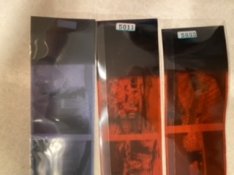IMO, the only good reasons to pay someone else to process your film are health issues (sensitivity to processing chemicals, for instance), or shooting so much you don't have time to do your own processing and scanning/printing. If the latter, it may be a hint you need to slow down (though I'm happy for your if your life lets you spend that much on film and processing -- mine doesn't).
A Patterson tank to hold two 120 reels (System 4? aka three-reel, because holds 3x 35mm) can be had, used, for well under $50. A changing bag (evil, horrible thing, its only saving grace is it's better than not having one) runs around $35 new. A few emptied/relabeled bottles from store brand club soda etc. will cost well under a dollar each, and IMO are the best easily obtainable storage bottles for chemicals. Even an E-6 kit is under $50, C-41 around $35, and basic B&W developer, stop, and fixer around the same. All of this will pay for itself compared to mailing off film four or five times, and you get your results back in hours instead of weeks.
If your lab is local to you, the trade-off isn't quite as clear, but you'll still save big money and get your results faster unless the lab does same-day processing (and most charge extra for that now).
Even before I got my darkroom built (loading my film in an evil bag), I had pretty much concluded there was no longer a reason to send my film to anyone else. I can do at least as good a job, cheaper, and faster (there are no local film labs that I can find in the Triad region of North Carolina). Now that I have a darkroom I can stand in and work on a counter, I can have negatives drying in under an hour from unloading the camera, if I need to -- or about an hour and a half including heating up the tempering bath and bottles for color.





 .
.